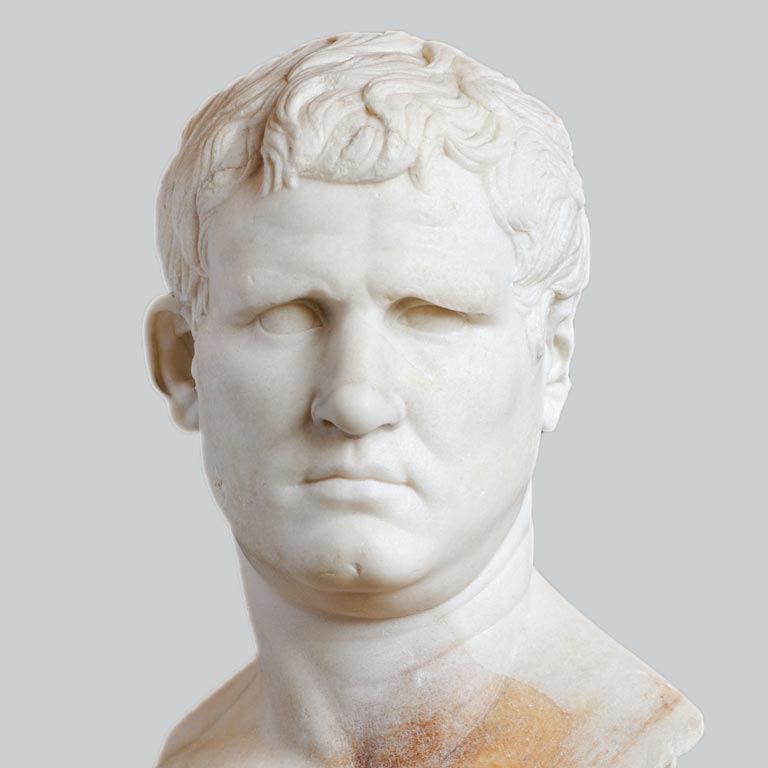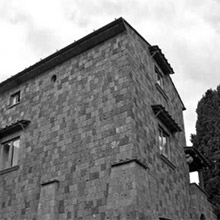Homer, the famous Greek poet, talked about Sorrento in the Odyssey. He described the city as the land of the mermaids that charmed sailors. It is very likely that these creatures were actually dolphins that accompanied boats trying to navigate up to the Costa Tufacea! From the Belvedere of Villa Zagara, during spring times, you can still admire these amazing animals accompanying ships. According to some sources, Homer mentioned precisely this viewpoint, as it was one of the few that overlooked the old harbour.
Agrippa was the great Roman general that defeated Antony and Cleopatra, but also a distinguished architect that created, among other buildings, the Pantheon in Rome. According to some legends, he stayed in the gardens of Villa Zagara in the summers of the 1st century B.C. together with Giulia, son of Caesar Octavian. It is very likely that he created the first open nympheum, which is currently the pool of Villa Zagara.
As told by Ovid, Agrippa Postumo son of Agrippa lived in exile in Sorrento in the 7 A.C. He used to spend a lot of time around the nymphaeums, some of which were adjacent to the current gardens of Villa Zagara!
Since the 13th century, the amazing gardens of Villa Zagara belonged to the monastery of the Benedictine Sisters, which was named Monastero di San Giorgio (Monastery of Saint George). Embroideries are a very important part of the traditional culture of Sorrento, and the Sisters were extremely good at creating them. The gardens of Villa Zagara are the proof of this tradition: here, mulberry trees were cultivated for the silkworm. At the Villa, you can still find the oven that was used for taking caterpillars down, so that they could not harm the worms: the integer ones were way more precious. The Monastery was invaded in 1558 by the Saracen, who enslaved the Sisters.
Ten years later, the abandoned building was rebuilt by the Dominican Monks, who took good care of the gardens. They started cultivating the vegetable gardens, olive trees and the medicinal herbs again. Also, they harvested the first citrus trees that were probably coming from friars in the Middle East. During this time, the convent - Villa Zagara - became the place of pilgrimage of Torquato Tasso. Here, he attended the gardens of Villa Zagara to confess his penalties to friar Fabiano, his confessor monk.
In 1809, following the suppression of religious orders, the Dominican Monks had to leave the building, which was then used as a Civic Hospital.
In 1880, the gardens were sold to the Calabrian barons Labonia, who built their residence made of tuff, the so called “Aux roches grises” (the grey stones), on the ruins of the ancient Roman Villa.
In the Belle Epoque period, around 1904-1905, Sr. William Waldorf Astor purchased the gardens with the superior nympheum, today Villa Zagara, and other areas such as the current Villa Astor. Mr. Astor had the gardens redecorated by Mr. Balduccini, the gardener of Parco Boboli in Florence. He planted cypress trees and a precious kind of olive trees, called di Minucciola, but also orange, Jacaranada, lanolins, ferns, hydrangeas, farfugium and magnolia plants!
In 1976, the shipowner Pane of Sorrento purchased the full compendium, including the part that we call today Villa Zagara.
In 1978, the Apreda family buyed the current Villa Zagara, calling it Villa Orchidea. They revived the gardens and made it a private villa, keeping the tradition of producing olive oil.
The Acampora-Apreda family transformed the private villa in an exclusive location for events, always enhancing the traditions and protecting the beauty and uniqueness of the gardens.










